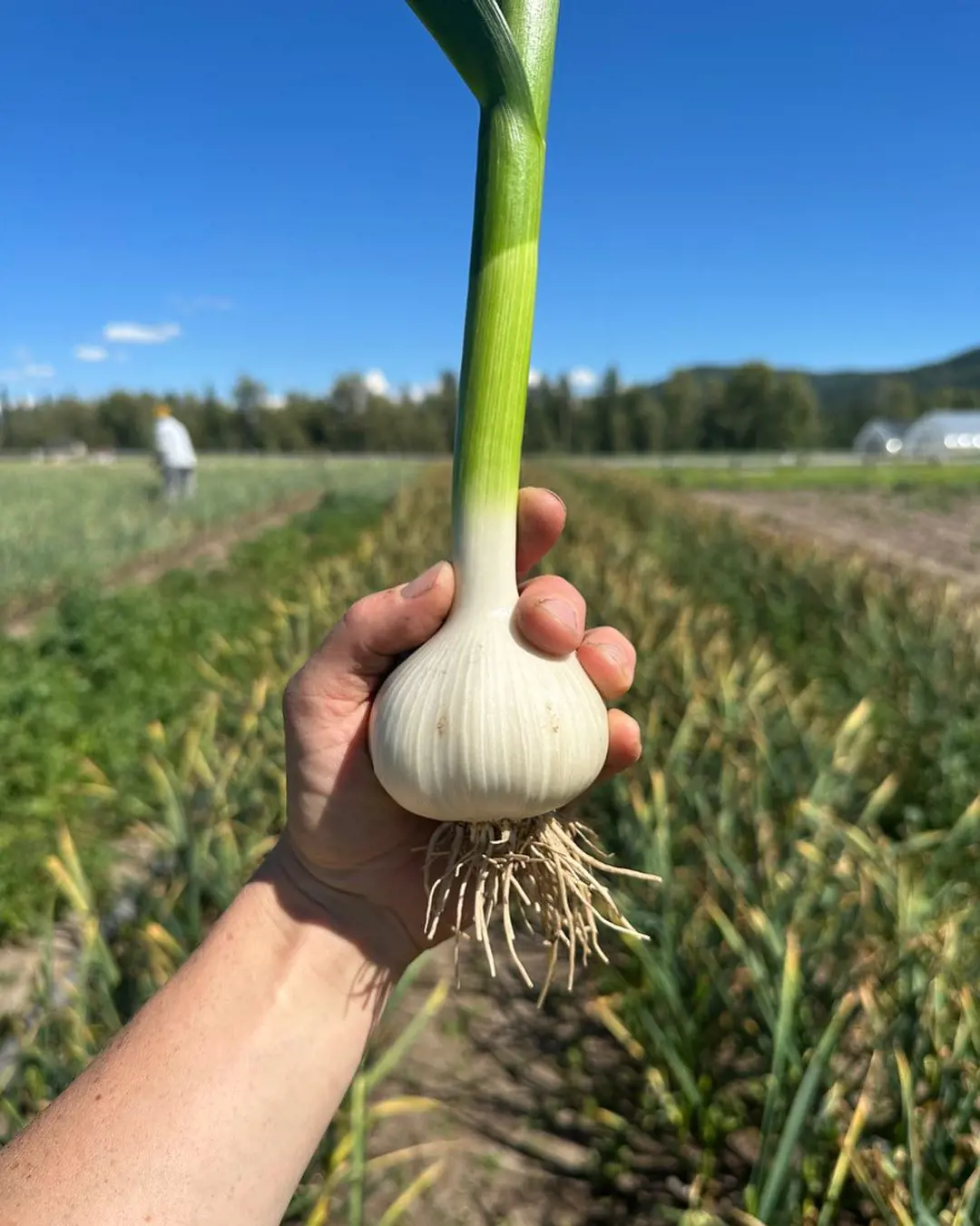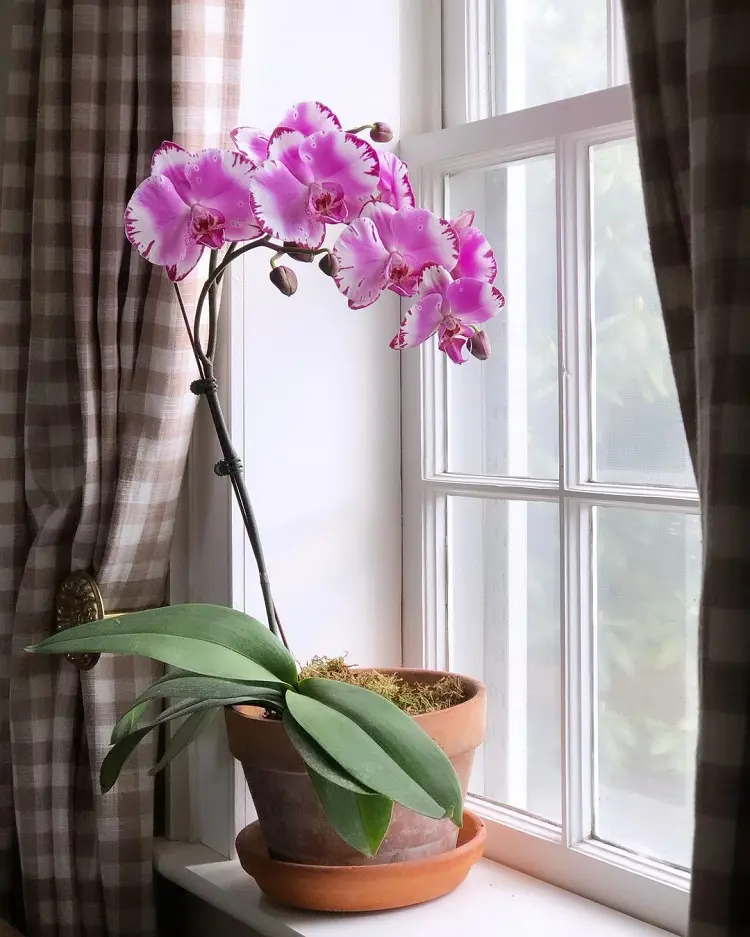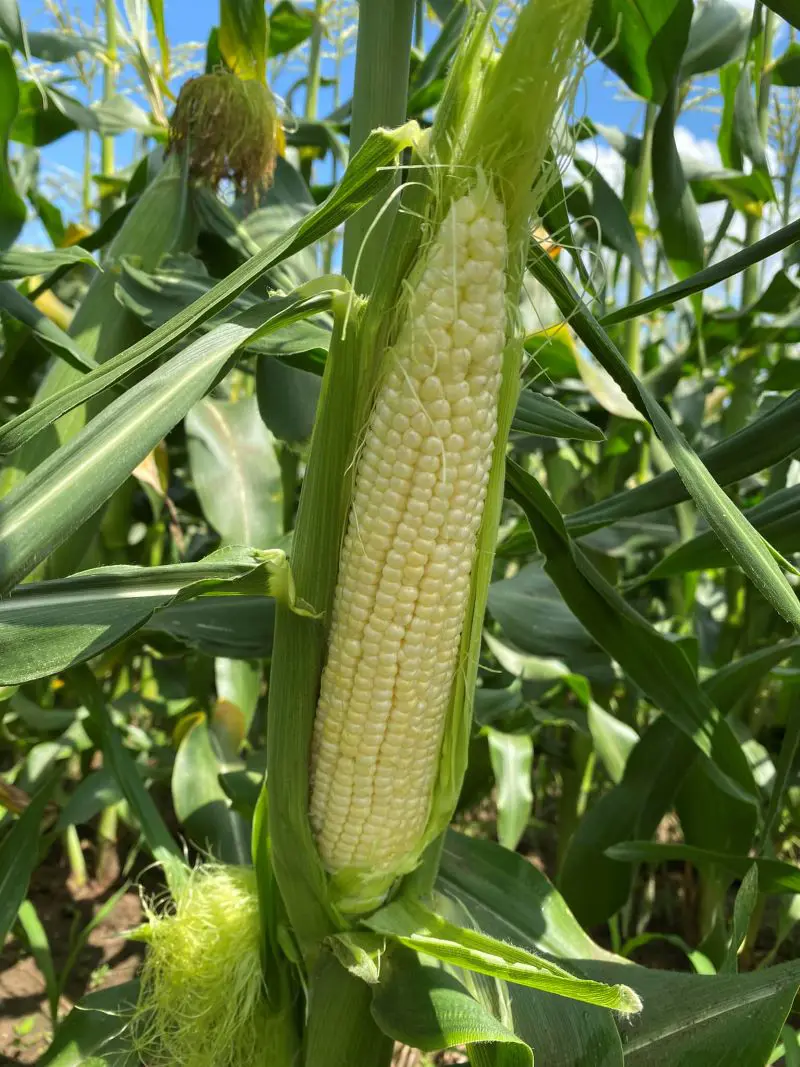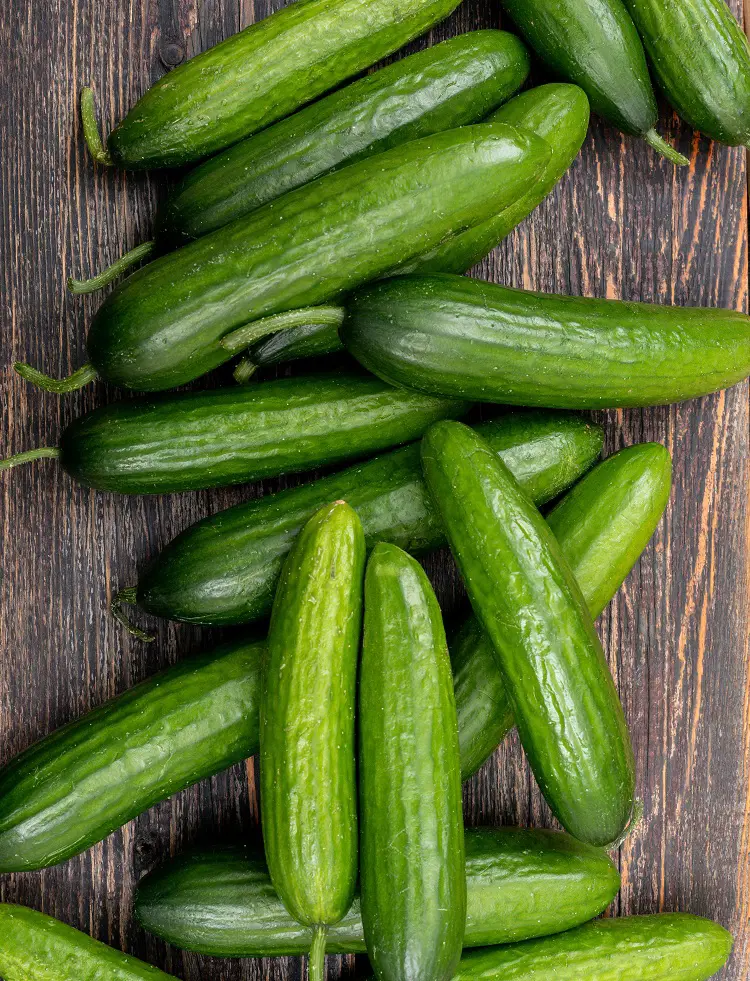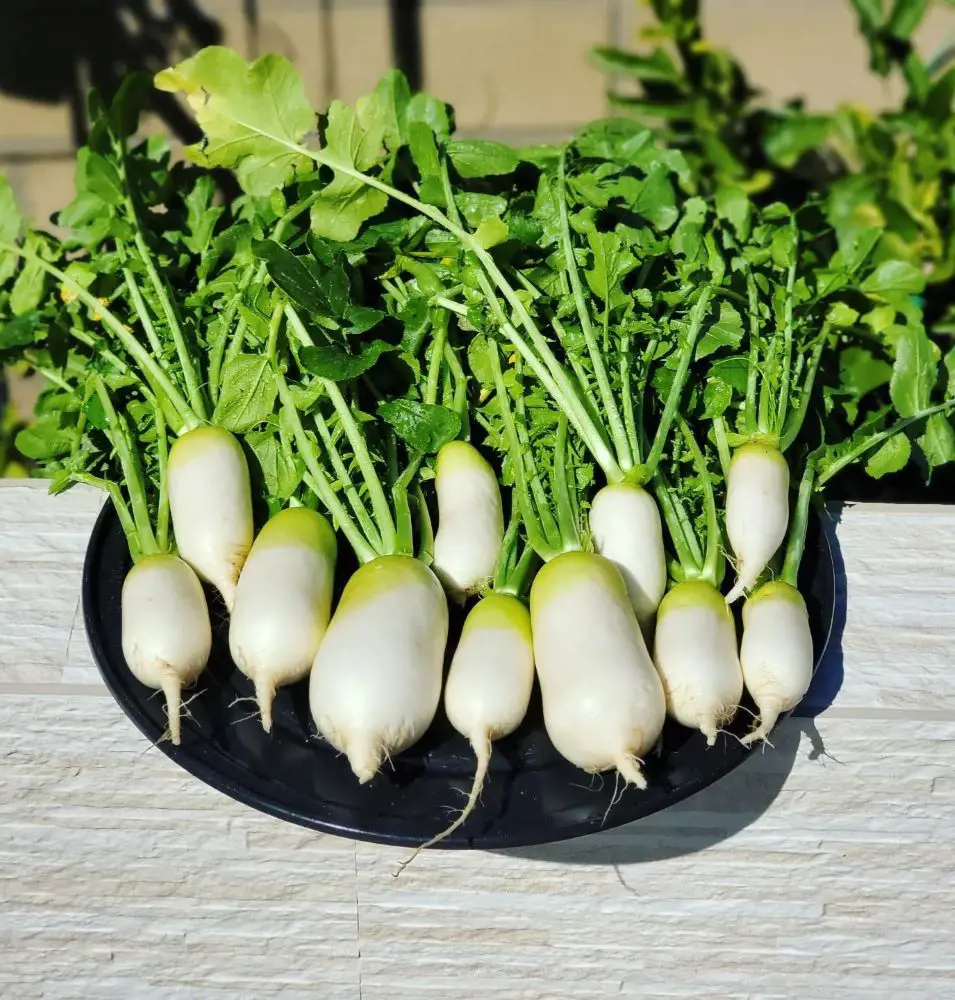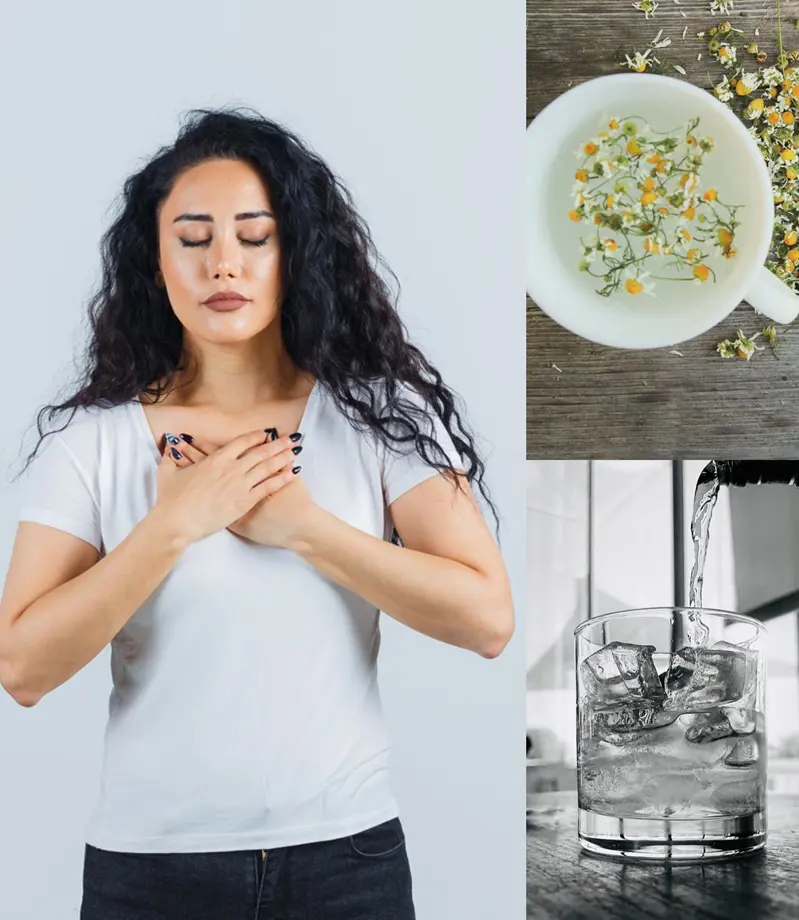How To Grow Tomatoes With Harvesting Ideas
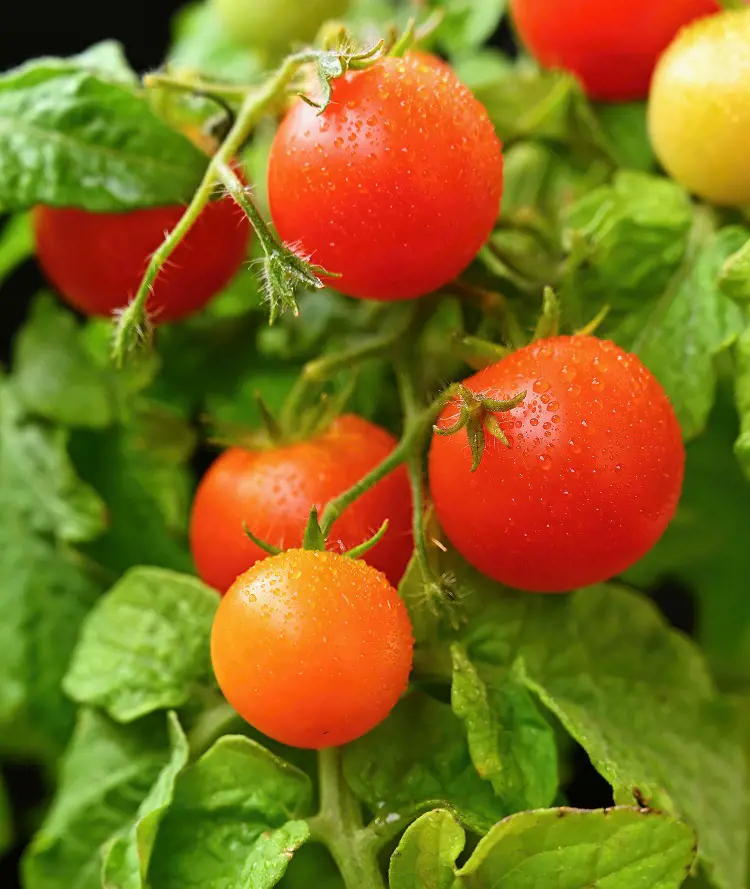
This post may contain affiliate links. If you make a purchase through links on our site, we may earn a commission.
Growing tomatoes is a rewarding gardening adventure, promising a bounty of delicious fruits for your summer meals. However, a few mistakes can lead to less-than-perfect tomatoes; bitter taste, mushy texture, or skin splits.
To ensure your tomato plants thrive, we've compiled simple tips for a successful journey from planting to harvesting. With our easy-to-follow guide, you'll navigate the nuances of tomato cultivation effortlessly, guaranteeing a fruitful harvest of tasty tomatoes for your culinary delights.
Let's make your tomato-growing experience both enjoyable and delicious!
1. Choose The Right Tomato Variety
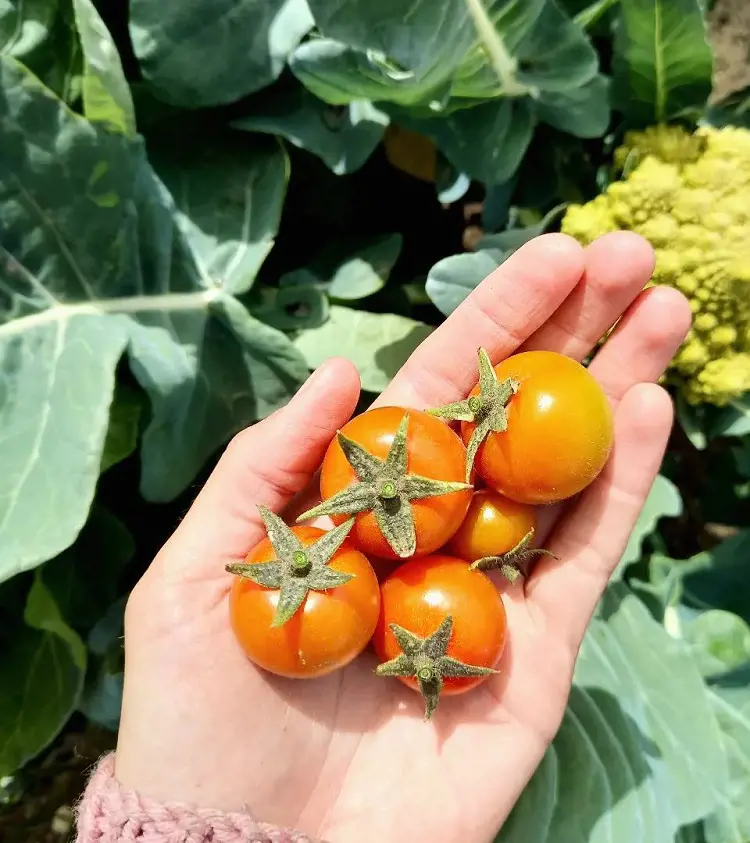
When growing tomatoes, think about your climate, space, and taste preferences. In hot areas, go for heat-tolerant types; if your seasons are short, pick early-maturing ones. For small spaces, try determinate varieties, and for larger gardens, go for indeterminate types that sprawl.
Consider taste too, cherry tomatoes are perfect for snacks, beefsteaks add flavor to salads, and paste tomatoes are great for making sauces. So, whether it's dealing with the heat, fitting into a small space, or creating tasty dishes, there's a tomato variety for everyone. Just choose what suits your garden and your taste buds.
2. Start With Quality Seeds Or Seedlings

To begin your tomato journey, go for top-notch seeds or seedlings:
- Seeds
For strong tomato plants, choose organic, open-pollinated seeds if you want to save them later. Start them indoors 6-8 weeks before the last frost to give them a head start. This helps your tomatoes grow healthy and produce lots of tasty fruits!
- Seedlings
Select robust, compact plants from trustworthy nurseries. Avoid wilted or sickly seedlings to ensure a strong beginning for your tomato plants. This quality foundation sets the stage for a successful and thriving tomato-growing experience. So, whether you're starting from seeds or buying seedlings, make sure they're in great shape for the best tomato harvest!
3. Provide Adequate Sunlight
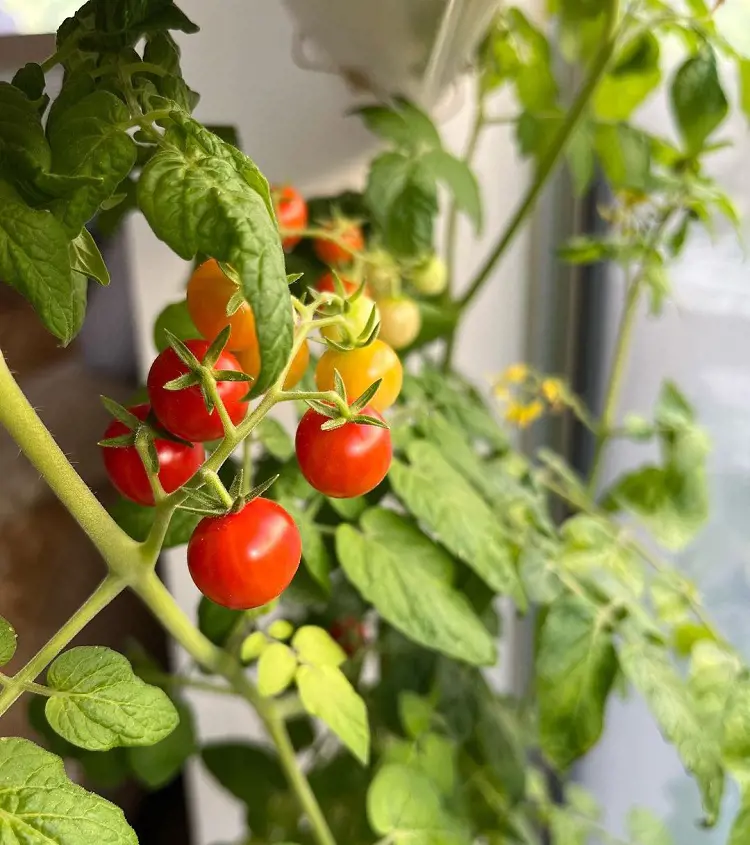
Give your tomato seedlings the light they crave! Unless you have a greenhouse, use artificial plant lights for 14 to 18 hours daily. Keep the lights close to prevent leggy plants, adjusting as they grow.
When it's time to move them outside, pick the sunniest spot in your garden, ensuring they get 6 to 8 hours of sunlight. Tomatoes love the sun for growing big and giving you tasty fruits. So, whether it's artificial light or natural sunshine, make sure your tomatoes get the rays they need for a thriving garden.
4. Use Rich, Well-Draining Soil
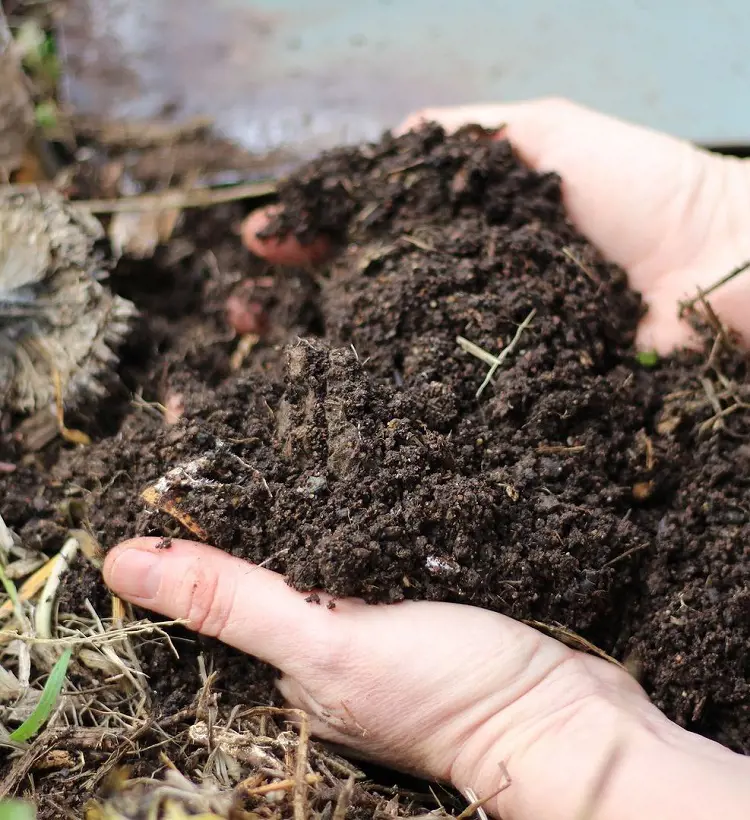
Make sure your soil is just right for tomatoes before you start planting. Tomatoes like slightly acidic soil with a pH between 6.2 and 6.8. Check your soil's pH at home or get a soil test from your local extension agency to know if it's good to go. A soil test can also reveal if there are any nutrient shortages.
Mix in compost before planting, and you can add more mid-season to keep the nutrients coming. If you prefer, use a fertilizer made for tomatoes every two weeks from planting time onwards.
5. Plant At The Right Time

Time your tomato planting right for success! Wait until the risk of frost is gone and the soil is at least 60 degrees. Also, ensure nights are warmer than 50 degrees before planting them outside. If you've grown tomato seedlings indoors, let them adjust by hardening off before putting them in the ground.
This means gradually exposing them to outdoor conditions. Being patient and choosing the perfect time for planting ensures your tomatoes get a good start and have the best chance to thrive in your garden.
6. Don't Crowd The Plant

Help your tomato plants thrive by giving them space to spread out. When they're seedlings, thin them out to keep only the strongest one per cell or small pot. Trim away the weaker, smaller ones, so the healthiest plant gets enough room.
Crowded conditions can slow down their growth and make them stressed, possibly causing disease later on. Once your seedlings have their first set of true leaves, transplant them into their 4-inch pots. Before moving them to the garden, make sure to harden off the seedlings by gradually getting them used to outdoor conditions. This way, your tomatoes will have the space and strength they need to flourish.
7. Support The Plants
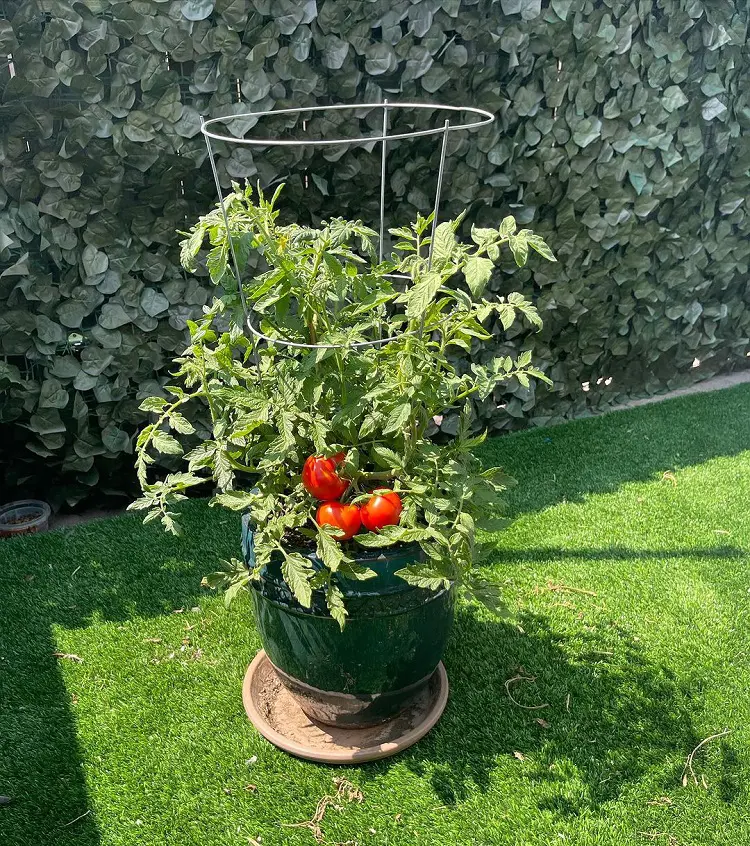
Give your tomato plants a helping hand when they're about 10 to 12 inches tall. They need support to stand tall and healthy. Use things like tomato cages, string trellises, or wooden or metal stakes tied with strong materials. Indeterminate tomatoes, which keep growing, usually need more robust support than determinate ones.
Even determinate tomatoes, which have a set size, benefit from stakes or cages, especially once they start bearing fruit. This support keeps them from bending or breaking under the weight of all those tasty tomatoes.
8. Water Consistently
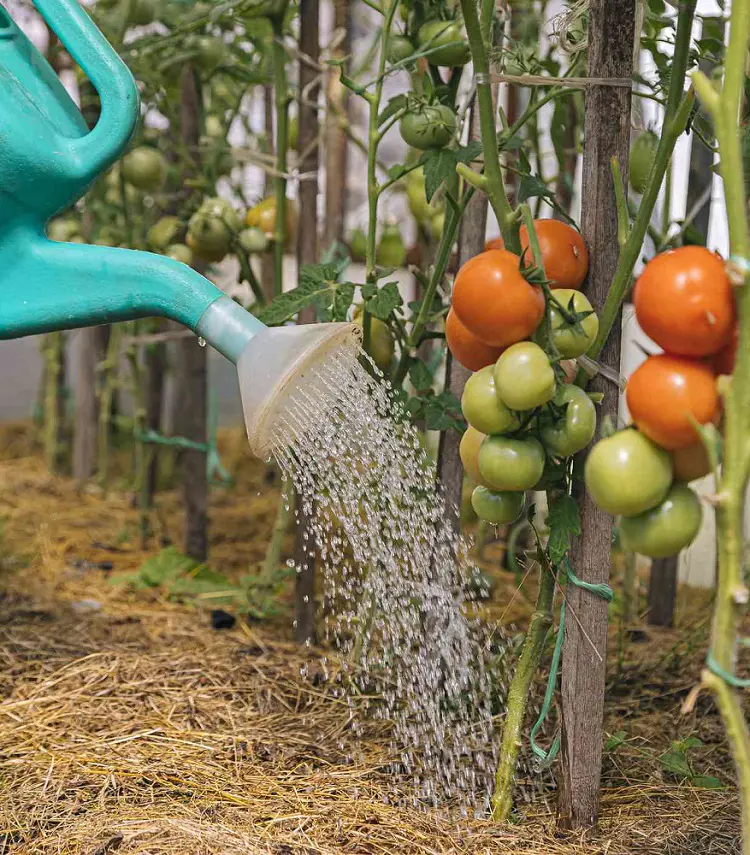
Take good care of your tomato plants by giving them the right amount of water. When the fruits are growing, water them deeply and regularly, especially during hot, dry times. If the plants look droopy during most of the day, it's time to give them a drink.
If it's not raining, aim for about an inch of water each week. Water at the base of the plant or use a soaker hose to avoid getting the leaves wet, which can cause diseases. Once the fruits start ripening, you can water a bit less.
Quick Tip:
- Inconsistent watering can cause blossom end rot, a condition linked to calcium deficiency.
- It also contributes to the cracking and splitting of tomatoes, affecting their overall quality.
9. Mulch Around The Plants

Wait until the ground warms up before putting down mulch around your tomato plants. Mulch is like a cozy blanket for the soil, helping to save water and keeping soil-borne diseases away from the plants. But be careful, mulch can also make the soil cooler because it provides shade.
So, once it's consistently warm outside, you can spread a layer of mulch to help the soil keep its moisture. It's like giving your tomato plants a little protection, making sure they have just the right conditions to grow strong and healthy. So, warm up the ground first, and then add that mulch later.
10. Fertilize Appropriately

Give your rapidly growing tomato plants the fuel they need to thrive. Choose a water-soluble fertilizer made just for tomatoes, especially if your soil test shows it needs extra nutrients. Apply it weekly and think about using a transplant fertilizer to help the plants adjust when you move them to the ground.
For a natural boost, use a balanced organic fertilizer or compost tea every 2-3 weeks to keep your plants healthy and growing strong. It's like giving them a nutritious meal regularly, ensuring they have all they need to produce tasty and plentiful tomatoes.
11. Prune Suckers

Keep your tomato plants in top shape by regularly getting rid of suckers. Suckers are those little shoots that pop up between the main stem and branches. By taking them off, you help air move around the plant better, and the plant can use its energy to make more fruit.
It's like giving your tomato plant a little haircut to keep it tidy and focused on growing those delicious tomatoes. So, whenever you spot those suckers, just pinch them off gently. Your tomatoes will thank you by growing healthier and giving you more tasty fruits to enjoy.
12. Disease Prevention And Pest Control
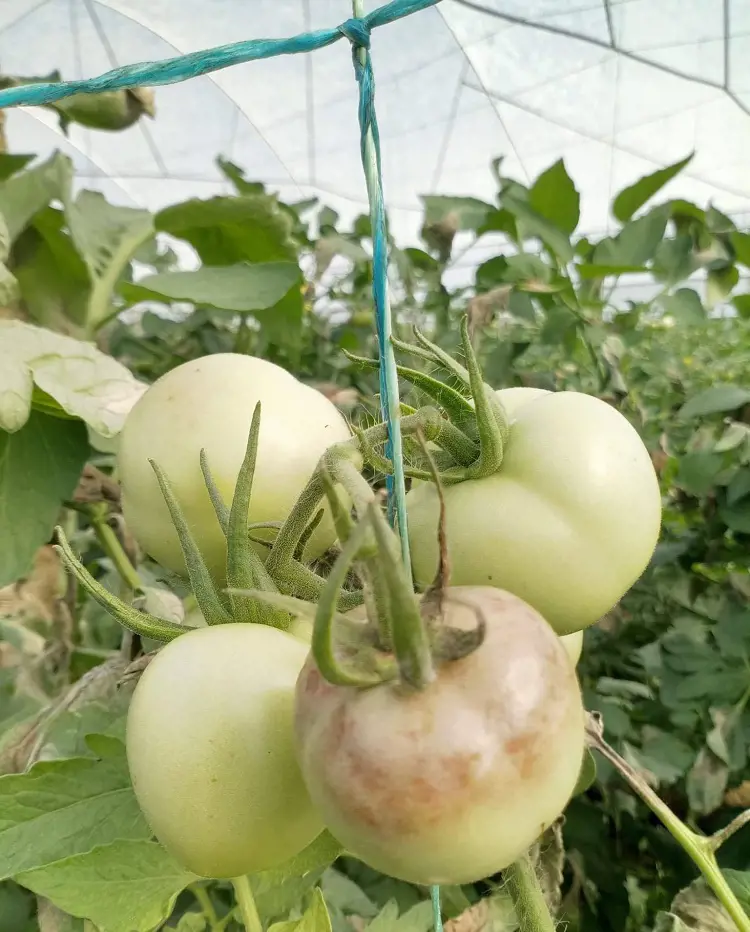
Protect your tomatoes from diseases and pests with these easy steps. Pick types of tomatoes that resist diseases, change where you plant them each year, and don't water them from above to avoid sickness like blight. Try natural fungicides to stop diseases before they start.
Watch for common pests like aphids, hornworms, and whiteflies. Bring in helpful bugs like ladybugs, or use neem oil, a friendly choice, to keep pests away. It's like creating a shield for your tomatoes, making sure they stay healthy and happy.
13. Help Out With Pollination
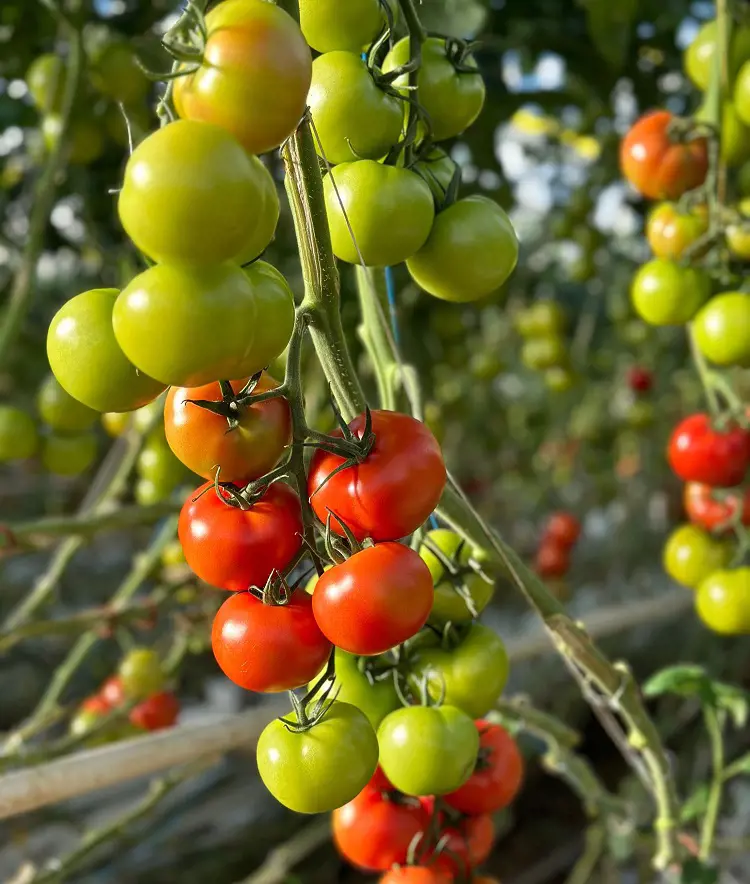
You can give nature a hand in pollinating your tomatoes! While bees and other pollinators do their part, you can help, especially if your tomatoes are in a greenhouse. All you need is a clean toothbrush or paintbrush.
When the tomato flowers open up, gently tap each one a few times with your brush. This helps the upper male pollen fall onto the lower female part. Gravity does this naturally, but a little human assistance can lead to even more tomatoes. So, by lending a hand, you're ensuring a fruitful harvest and helping those tasty tomatoes grow.
14. Remove The Buttom Leaves
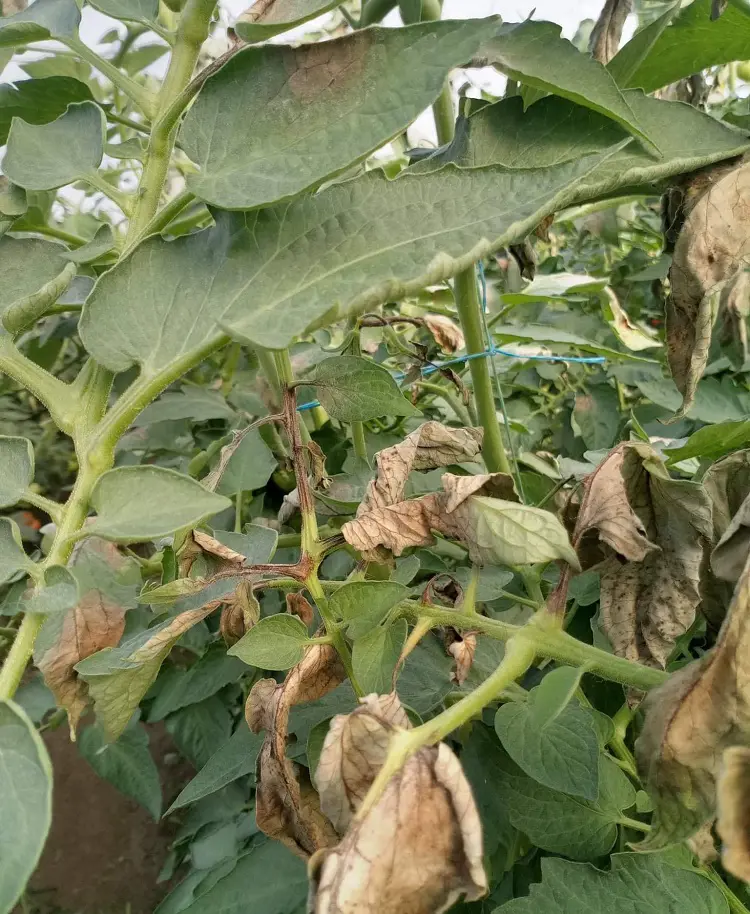
Once your tomato plants grow to about 2 to 3 feet tall, it's a good idea to take off the bottom leaves, especially the ones within the first foot of the stem. These older leaves often encounter fungus issues, as they're close to the ground and can touch soil-borne problems.
By removing them, you reduce the risk of fungal diseases. Remember to clean your clippers between plants to stop any disease from spreading. If you want an extra layer of protection, spray your plants with compost tea every week.
15. Consider Crop Rotation

To keep your tomatoes safe from diseases, try a trick called crop rotation. It's like giving your plants a new home every year. Bad things that can hurt your tomatoes, like fungi and other plant enemies, can sleep in the soil during winter and wake up in spring.
But if you move your tomatoes to a different spot each year, these enemies won't find them again. It's like playing hide and seek with the bad stuff. This way, your tomatoes stay healthy, and you get to enjoy tasty, disease-free fruits.
Harvesting Tomatoes

You should harvest and store tomatoes properly to get the optimal benefits. Here is the right way of harvesting tomatoes:
- Harvesting Time: Harvest tomatoes when they reach their mature color (red, yellow, orange, etc., depending on the variety) and have a slight give when gently squeezed. Avoid picking them when they are still completely green.
- Use Pruning Shears or Scissors: To avoid damaging the plant, use clean pruning shears or scissors to cut the stem, leaving a small portion attached to the tomato.
- Harvest Regularly: Pick tomatoes regularly to encourage continuous production. Overripe tomatoes can attract pests and diseases.
- Morning Harvest: For the best flavor and nutrient content, harvest tomatoes in the morning when they are cool and have higher sugar levels.
Recent posts
How To Grow
How To Grow
How To Grow Garlic
A bulbous member of the onion family, garlic is prized for both its potent flavor and a variety of therapeutic applications. Due to its relative ease of cultivation, it is a favorite among home gardeners and a pioneer in kitchens worldwide. Garlic ma...
How To Grow
How To Plant and Grow Orchids
Orchids are one of the prettiest and most interesting flowers out there, with over 30,000 types and 200,000 hybrids. They are one of the biggest families of plants and can grow indoors or outdoors. However, growing and taking care of orchids is not e...
How To Grow
How To Plant, Grow And Harvest Corn All By Yourself
Growing your popcorn or sweet corn at home garden can seem like an interesting idea. However, it requires a large amount of space to grow as it is a tall plant that needs plenty of room to spread out. But, if you want to enjoy freshly popped po...
How To Grow
How To Plant, Grow And Care Cucumbers
Growing cucumbers is like going on a fun journey where you get to plant and pick your very own crunchy veggies. It's not just about having tasty cucumbers, it's also about the joy of seeing your plants grow. Whether you have a big garden or a small b...
How To Grow
How To Plant, Grow And Care Radishes In Your Garden
Growing radishes in your garden is a fantastic way to enjoy crisp and peppery veggies that you've nurtured from seed to plate. It's a straightforward process that anyone can try, even if you're new to gardening. In the following 12 steps, we'll guide...
How To Grow
How to Plant, Grow And Care For Spinach?
Growing leafy greens in your backyard garden is both healthy and fun. Spinach can be the best leafy green to start with as it is relatively easy to grow from scratch and can be harvested in about a month from planting. It thrives in spring or fall in...
